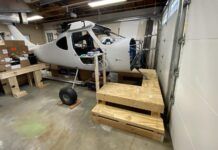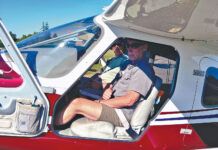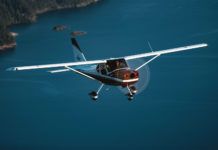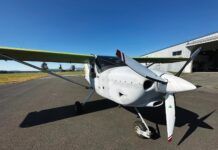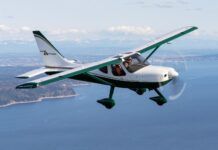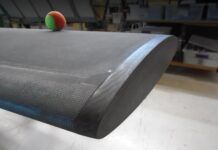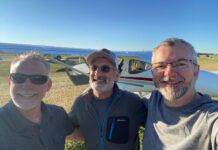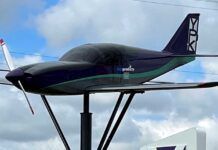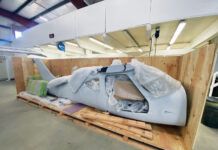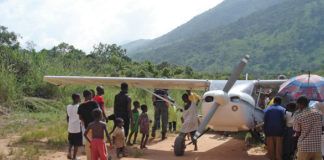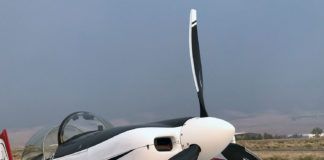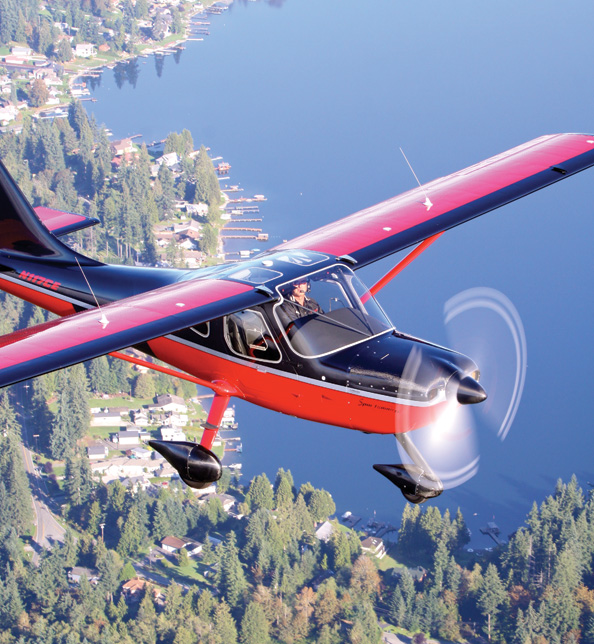 You’re a kit airplane manufacturer. You’re staring troubled times in the face. (Well, who isn’t?) You would love to produce an all-new model to spur sales, excite the marketplace and show off your engineering prowess. But you’ve heard that only fools and the grossly overfunded drop an expensive new toy into a soft economy. It could be the best new thing ever, but if the phones aren’t ringing and the buyers aren’t lining up at the airshows, what’s the point?
You’re a kit airplane manufacturer. You’re staring troubled times in the face. (Well, who isn’t?) You would love to produce an all-new model to spur sales, excite the marketplace and show off your engineering prowess. But you’ve heard that only fools and the grossly overfunded drop an expensive new toy into a soft economy. It could be the best new thing ever, but if the phones aren’t ringing and the buyers aren’t lining up at the airshows, what’s the point?
Next best? Take your current product and apply what you’ve learned over the last decade of building the kit to improve its performance and utility without running the engineering department’s budget deep into the red. The questions remain: Can it be done, and will it be worth the effort?
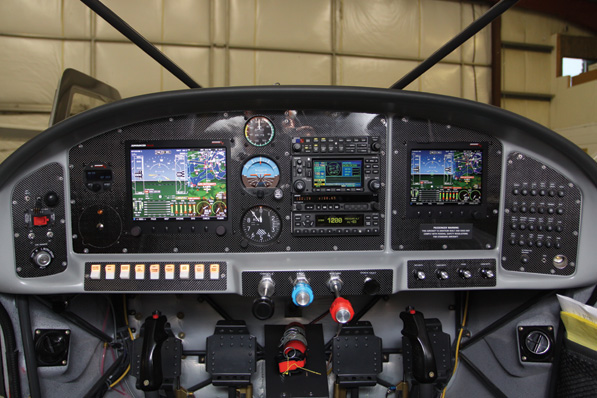
Case in Point
Submitted for your consideration is this answer: the Glasair Aviation Sportsman Turbo Carbon, TC for short. Introduced at AirVenture 2010, the TC would seem like a mild “re-skin” (to use automotive-industry parlance) of the popular and enduring Sportsman 2+2 utility high-wing design. After all, stand beside the demonstrator, even with the carbon-fiber weave proudly displayed under clear-coat paint, and you might be excused for thinking not much was new. The key items that set the Sportsman apart from the pack remain in place—composite shell over a steel-tube “safety cage” plus an all-aluminum wing and multifarious landing-gear configurations.
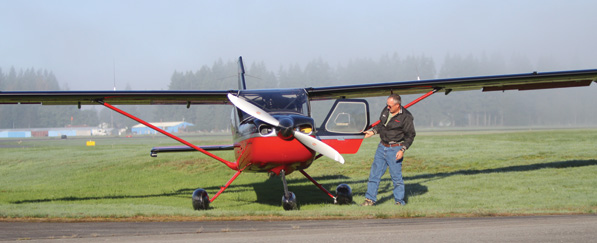
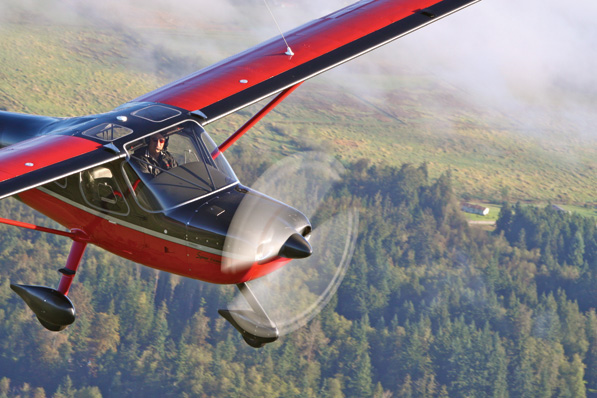
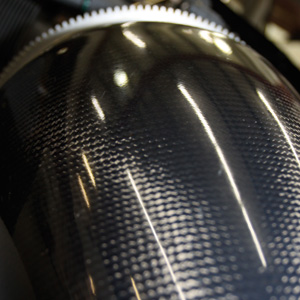
All things considered, the Sportsman’s performance is more than adequate. With the larger of the two most popular engines, a 210-hp, four-cylinder Lycoming, the 2+2 can cruise at 150 knots true airspeed (KTAS) on 11 to 12 gph. The takeoff roll uses 400 to 500 feet of asphalt, and the initial climb that follows peaks at 1200 fpm at maximum-gross weight.
A good power-to-weight ratio helps the climb, and good aerodynamics benefit the cruise speed, but the Sportsman doesn’t give away utility. (Most very fast airplanes also have high stall speeds, which push takeoff and approach speeds up, in turn increasing runway requirements.) A reasonable amount of wing, 131 square feet of GAW-2 airfoil in a constant-chord, untwisted configuration, keeps stall speeds low. The full-flap, max-gross stall speed is 44 knots indicated airspeed (KIAS), which makes approaching to land at 60 to 65 KIAS comfortable and safe.
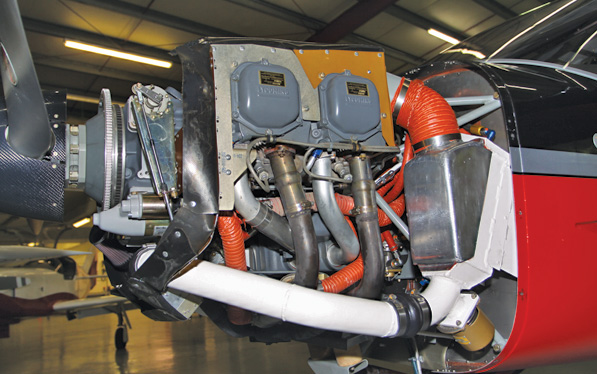
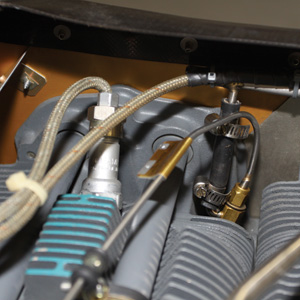
Yeah, So?
These characteristics have been with the Sportsman from the start, the speed amplified by the factory’s decision to support the new Lycoming IO-390 in 2006. Seeking yet another performance bump, Glasair Aviation took a two-prong approach: reduce weight and increase power.
The first half of that decision is where the carbon-fiber comes in. In the normal way of things, the Sportsman uses conventional E-glass (and vinylester resin to hold it together) in a molded construction for the main fuselage shell that includes the vertical stabilizer. That’s right around 20 of the airplane’s total length of 23 feet in semi-structural composites; in other words, a lot of glass. One advantage of the glass-over-steel-tube design is that the composites are not highly stressed. Yes, the shell is structural for tail loads (both aerodynamic and as part of the landing gear in taildragger configuration), but these aren’t the difficult pinpoint loads you’d get from the wingspars and engine mount, for example. That fact, in turn, provides some flexibility in materials, which Glasair Aviation fully leveraged.
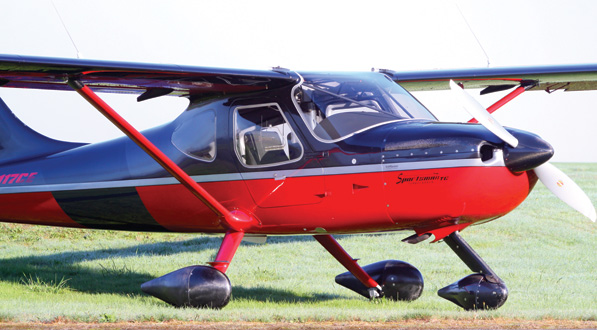
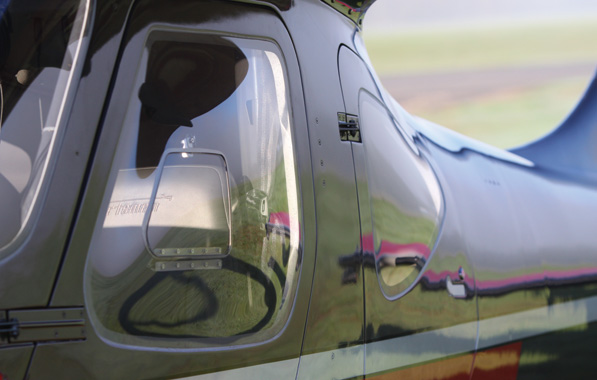
So in the Sportsman TC, everything that once was E-glass is now carbon-fiber—main shell, landing gear fairings, engine cowling, wingtips and various other bits. The price to upgrade is a healthy $15,000 strictly on the difference in raw materials costs. For that cost you get a weight reduction of more than 40 pounds.
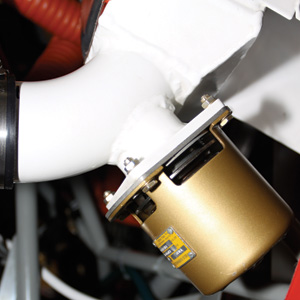
But the benefit is actually greater, because Glasair elected to further improve the airplane’s already good load-carrying capabilities by making detailed structural changes to increase the maximum-gross weight from 2350 pounds to 2500. That’s on wheels. For floatplane use, Glasair Aviation approves a max-gross of 2650 pounds. When you think that the Sportsman isn’t so far removed from the 1950-pound GlaStar, that’s a pretty amazing number.
Existing Sportsman builders who haven’t yet certified their ships shouldn’t assume this is a pencil-whip exercise. In fact, a number of the tubes in the fuselage cage had to change, mostly by increasing their wall thickness. Plus there are detail changes in the wing structure to handle the increased max weight. A good portion of the fuselage alterations had little to do with aerodynamic or in-flight structural loads; certain tubes locating the landing gear sockets were changed to help increase resistance to deformation under “drop” loads.
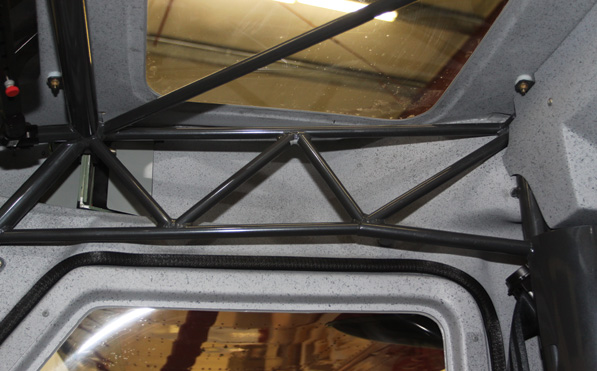
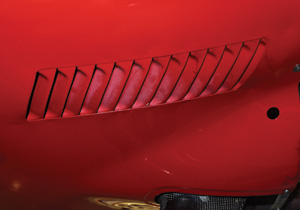
Heavy Breather
While the outside of the Sportsman TC doesn’t betray many of the substantial changes, one peek under the cowl changes your outlook. A bone-stock IO-360 parallel-valve Lycoming sits in standard engine mounts, but it seems to have a bad case of hose-itis. Additional oil lines to serve the automatic wastegate and to keep precious fluids flowing to the Garrett turbo mounted low and to the right side of the engine are obvious. Somewhat less so are the air lines leading to the otherwise stock Slick mags (to pressurize them in preparation for high-altitude work) and the hoses feeding the special turbo fuel injectors.
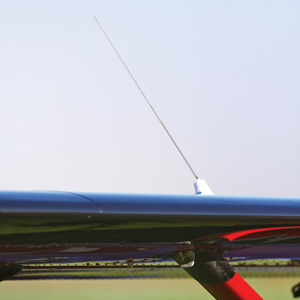
Because this installation is turbo-normalized, the Lycoming compression ratio is the stock 8.5:1, though the magneto timing is retarded from the normal 25° BTDC to about 20° to 22°. (The final setting was not fixed when we flew the airplane.) But this engine has been fitted with piston oil squirts: passages drilled in two oil galleries that direct oil to the bottoms of the pistons in an effort to reduce cylinder head temps.
Overall, the installation is quite neat. Induction air enters the turbo on the lower right side of the cowling through a K&N filter. From the turbo, a solid tube carries compressed air behind the engine to a large intercooler mounted on the firewall just at the left edge. Air to cool the intake charge is picked off from behind the No. 4 cylinder and exhausted toward the cowling exit. Induction air continues from the bottom of the intercooler forward to the waiting mouth of a Precision Airmotive RSA injector throttle body. A firewall-mounted oil cooler receives air from behind the No. 3 cylinder. This installation maintains almost all of the standard Sportsman cowling and baffling.
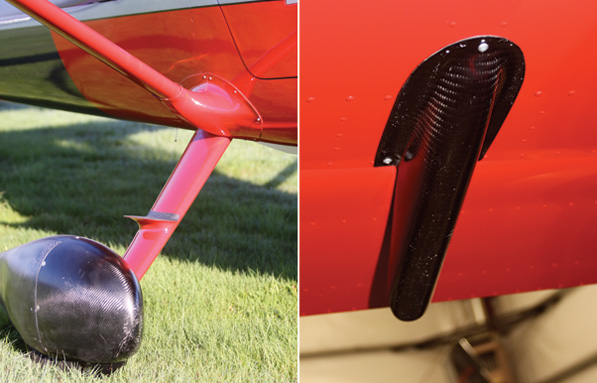
While the cooling inlets and main exit are the same as for the non-turbo Sportsman, a pair of louvers are added to the lower cowling to help extract hot air. In addition, the single exhaust pipe exits slightly toward the copilot side from where it normally would. But many small tweaks to the baffling—mostly to ensure a complete seal—and ramps that smooth the transition from the upper edge of the inlets to the inside of the cowling help accommodate the increased heat load of the turbo installation.
Cost and weight are the two dings against any turbo setup. The total upcharge of the turbo package has not been set, but will be in the neighborhood of $35,000. That’s on top of all the other things you have to buy like engine, prop, airframe. And those 40 pounds lost thanks to the carbon-fiber skin? Virtually all eaten by the turbo. Nevertheless, the estimated empty weight of a Sportsman TC is about 1450 pounds, certainly in the mix of actual Sportsman weights when using the IO-390. But don’t forget the higher maximum-gross weight. Even with the 50-gallon tanks (48 usable) full, you still have 750 pounds for the cabin. Moreover, the combination of the turbo engine and lighter fuselage moves the empty CG forward, so in an airplane not prone to bumping the aft-CG limit you have even more loading flexibility. Hunters, fishermen, er, sportsmen will appreciate both the weight and cubic carrying capacity of the TC.
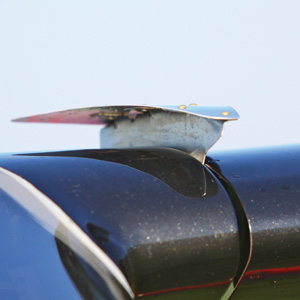
Flying It
Waking the turbo Sportsman isn’t much different than bringing any injected Lycoming online, and the taxi-out and runup are completely conventional. The surprises come when you throttle up for takeoff. This turbo installation has no lag and no bad manners in this regime. The throttle responds smoothly, the turbo comes up predictably, and the manifold pressure hunts down and sticks to a steady 34 inches. Wait, isn’t that more than it should be as a turbo-normalized engine? Yes, but General Aviation Manufacturing, Inc. (GAMI), the forward-looking company that refined turbo kits for Bonanzas and created the system for the Cirrus SR-22TC, is accommodating the increased inlet temps present even with an intercooler. To get the expected 180 hp (or even a bit more), you need more than 30 inches for takeoff.
The second surprise is the fuel flow. Just before this flight, a technician from Precision Airmotive had altered the Sportsman’s injection to increase maximum fuel flow. The Advanced Flight Systems display’s fuel-flow figure rolled right up to 23 gallons per hour during the initial takeoff roll. That’s 3 gph more than the 210-hp Lycoming IO-390 takes down, and up by 5 gph over the non-turbo IO-360. It’s the price you pay for turbocharging. To maintain detonation margins, you need to run either quite rich or moderately lean. Mixture settings at 40° rich of peak provide the highest cylinder-head temps. Turbos, when run rich of peak, like a goodly amount of fuel.
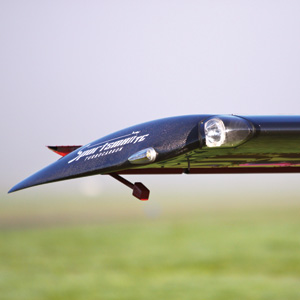
Going Up
The good news here is that the image of $150 per hour of fuel going through the pipe is offset by impressive takeoff and climb performance. In our flight, with partial fuel and two full-size men aboard, the demonstrator aircraft got off in 500 feet, hit an initial climb rate of more than 1000 fpm with 10° of flaps at 75 KIAS. Stow the manual flaps, leave the power full in, and you’ll see 1200 fpm at 95 KIAS, well above the best-rate speed but a good compromise for engine cooling and over-the-nose visibility. We continued the climb at full power, with the manifold pressure gradually tailing off above 12,000 feet MSL (and the fuel flow going with it), and still maintained better than 1000 fpm through 8000 feet MSL at 95 KIAS; we were still moving along at 850 fpm past 14,000 feet MSL. The climb to our test altitude of 16,500 feet MSL took approximately 20 minutes including some maneuvering and a bit of experimentation with different airspeeds for engine cooling. While the per-hour rate of 23 gph (tapering to 21 as we climbed) seems gluttonous, we used just more than 8 gallons to get to altitude because we weren’t at that setting for long. A normally aspirated, 180-hp Sportsman would have done the deed on less fuel but taken much more time; it’s common to see climb rates above 12,000 feet MSL taper to 500 fpm or less.
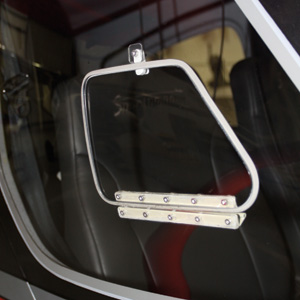
Throughout the climb, the Turbo Sportsman was well mannered. After fiddling with fuel flows and speeds, we were able to raise a cylinder above the arbitrary 380° F limit. (Lycoming says 475° maximum with a recommendation “for better life” to maintain 435° F or less.) The 380° rule comes from GAMI, which has seen an increase in top-end life in big-bore Continentals by adhering to this limit.
Level Headed
High-altitude cruise is where you expect a turbocharged airplane to really shine. The Sportsman does well; we’ll explain that verbal asterisk in a moment.
We tried two basic cruise settings: rich of peak and lean of peak. Rich, you leave the throttle full in, reduce rpm to 2500 and leave the mixture up to the firewall. At 16,500 feet MSL (barometer of 30.03 inches, OAT of +3° C), we tried 30 inches of manifold pressure, 2550 rpm, full rich (19 gph) to get true airspeeds between 156 and 158 knots. Fast, substantially faster than the non-turbo version, but unreasonably thirsty. At this speed, too, the cooling mods needed for climb caused the engine to run too cool, with cylinders in the 330° to 355° range.
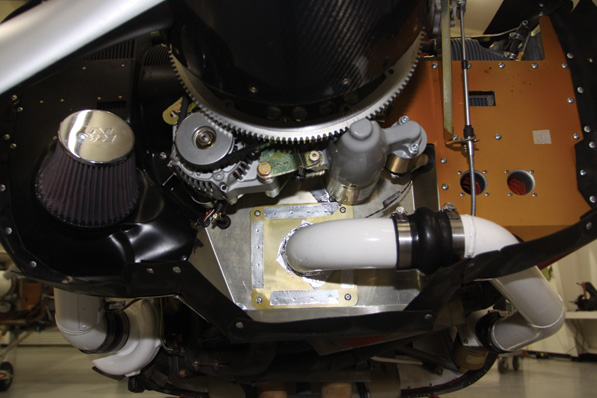
Lean of peak is where turbos become much more fuel efficient, but there’s a catch. Remember that caution about maximum head temps occurring near 40° F rich of peak? Good. Understand as well that power falls fairly quickly as you move leaner from peak EGT, so that the sweet spot is anywhere between 40° and 60° F LOP. Head temps track a similar line, and the gradient is similarly steep. As a result, small changes in mixture setting LOP can have a large impact on both speed and cylinder head temperature (CHT). You have a comparatively narrow range in which to work: Too lean and the airplane slows down, too rich (but not rich of peak) and the airplane speeds up, but the CHTs rise quickly. If you have set a modest working limit for CHTs, you can run into temp limits that really determine how fast you can go LOP.
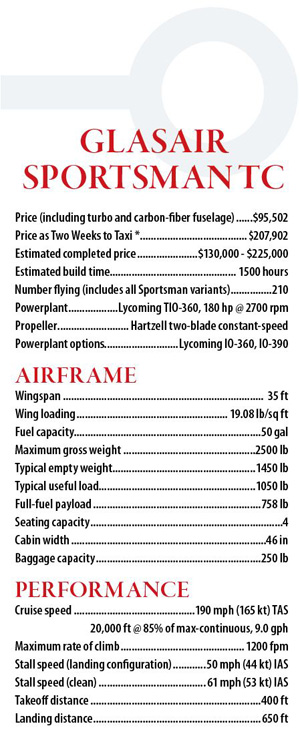
Such a characteristic appears in this particular turbo installation. After considerable experimentation, we determined that the Sportsman TC would, on this hot day, tolerate mixtures at or leaner than 10.1 gph without busting the 380° F limit. Our speed was now 146 to 148 KTAS at the same 16,500 feet MSL. While that range doesn’t seem impressive, an IO-390-powered Sportsman would be doing well to make 135 to 138 KTAS at the same altitude despite having a 30-hp sea-level advantage; a 180-hp Sportsman would be slower than 130 KTAS at the same altitude.
A side note on the numbers. We flew this airplane twice, once early in the development process, where the cooling system had not been refined. On the second flight, an unexpected variable had been introduced because Glasair Aviation was testing the 74-inch-diameter Hartzell composite prop; the earlier flight was with the 72-inch metal blended-airfoil prop normally specified for this airplane. Data on both props on the Sportsman airframe suggest that the larger, composite prop is a bit slower at altitude.
Had we allowed the CHTs to run to, say, 390° or even 400° F, and had the metal prop been mounted, it’s likely the measured cruise performance would have been better. It’s not unreasonable to think 150 to 152 KTAS is possible, running low-consumption fuel flows under ideal conditions. What’s more, there may be still more to be found by improving this engine’s cooling so that slightly more fuel could be used at altitude, with a resulting increase in true airspeed. But there may not be much more. An advantage of the parallel-valve engine is its low weight compared to the angle-valve brethren, but its cylinder design simply can’t shed as much heat as the angle-valve type no matter how much cooling air you run around it.
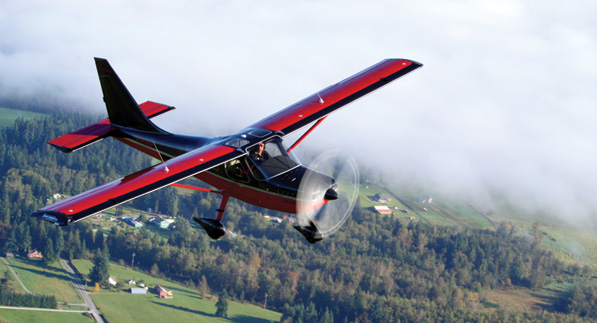
For more information, call 360-435-8533 or visit www.glasairaviation.com.

